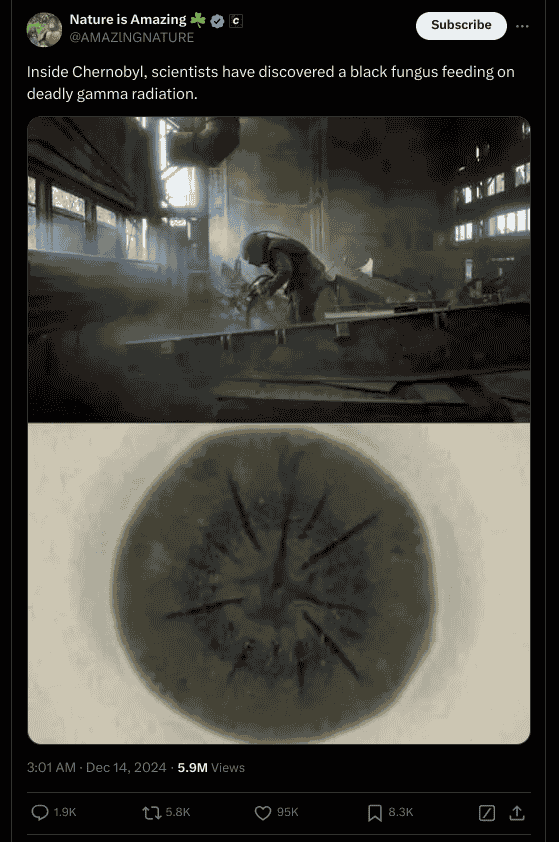Scientists Discovered Black Fungus Feeding on Gamma Radiation Inside Chernobyl

Decades after the Chernobyl disaster of 1986, which took place following the No. 4 reactor explosion of the Chernobyl Nuclear Power Plant near Pripyat in Ukraine, the place still remains partially abandoned. This is considered to be one of the worst nuclear disasters of the world, leaving 30 kilometer land in exclusion zone with high radiation levels.
Scientists have been exploring the abandoned area, doing research and investigation, and they have come across a black fungus on the walls of the No. 4 reactor, the place where the radiation level is the highest. What is surprising is that, this black fungus is not just surviving the radiation, but actually feeding on it!
Read more about the report below.
Black Fungus Feeding on Gamma Radiation Found in Chernobyl
This black fungus which has been identified as ‘Cladosporium sphaerospermum’ was found when scientists observed blackened growth on the walls of the No. 4 reactor in the Chernobyl Nuclear Power Plant, and just like other black fungus species like Cryptococcus neoformans and Wangiella dermatitidis, it contains melanin. While in the human body melanin is used to protect the skin from harmful UV rays and also provide a darker skin tone, in these fungus they serve a different function. Yes, what you might have guessed is right, they absorb radiation and convert it into usable energy for them.
In this same manner, the Cladosporium sphaerospermum fungus species that has been found in Chernobyl also absorbs radiation at levels which is dangerous and lethal for most living beings and uses it to grow. In other words, the black fungus feeds on it to thrive, similar to how plants make use of light in the photosynthesis process.

Scientists believe that this discovery will have many applications in real life, including using it for more space exploration and overcoming harsh radiation environments. Also, even after Chernobyl being a deserted area till date, this is proof that ‘life always finds a way’.


